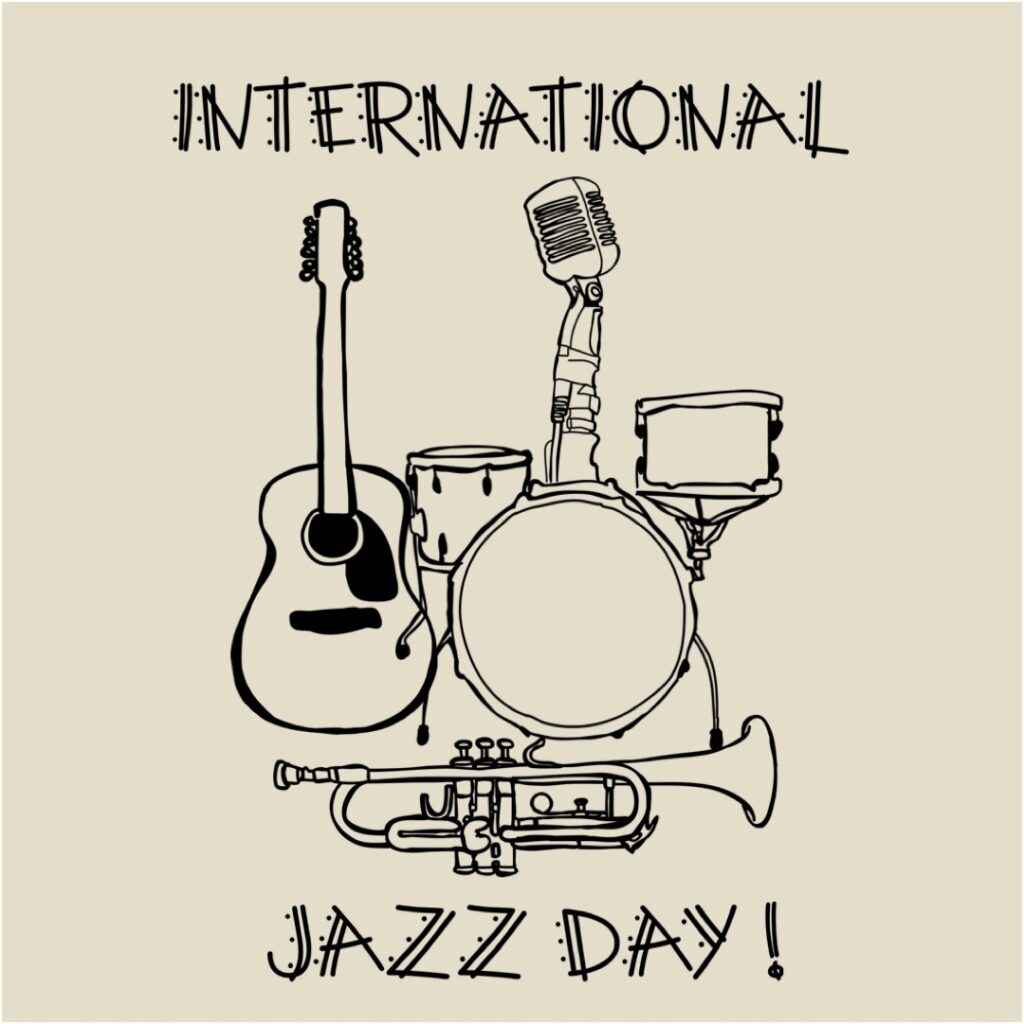Honouring the legacy of jazz music
This International Jazz Day, St Andrews alumnus, musician and writer Eli Thayer (MA 2023) shares his experience of the University’s jazz scene and explains why it’s important to break down barriers to ensure the genre is celebrated for its roots and can be enjoyed by all.
That a town of fewer than 20,000 people on the east coast of Scotland could be described as having a lively jazz scene may be hard to believe. Yet when I mention to musicians in Glasgow that I studied at the University of St Andrews, they often respond that they have heard good things about the scene there. Jazz at St Andrews – as is clear from the many students who pack the Union every Thursday night for jam sessions – is a prime example of this genre’s inherent communality and ability to connect with younger generations.
Jazz: a shared language
Jazz music is built around collaboration; each performance is a collective improvisation in which players converse in a shared language, each drawing on an individual blend of influences. Together, they fashion a fleetingly unique tapestry out of centuries of cultural threads. Jazz is a living tradition in every sense, with an inherent ephemerality that renders it perpetually thrilling. It is no wonder that students are drawn to it.
International Jazz Day
International Jazz Day (IJD) – established in 2011 by UNESCO and pianist Herbie Hancock – “brings together communities, schools, artists, historians, academics and jazz enthusiasts from all over the world to celebrate and learn about jazz and its roots, future and impact; raise awareness of the need for intercultural dialogue and mutual understanding; and reinforce international cooperation and communication.”
In the 13 years since its foundation, celebrations have spread to over 180 countries, and the selection of St Petersburg and Havana as host cities for the event, alongside Washington DC attest to the organisers’ diplomatic ambitions.

Image credit: Amrita Rahman
Remembering its roots
This year, however, marks the first time that International Jazz Day is based on the African continent. Tangier is an ideal location to “highlight cultural and artistic ties between people in Morocco, Europe and Africa”, and also serves as a reminder of the roots of this tradition. Jazz is Black American music, developed in the early 20th century in New Orleans from blues, ragtime, and African rhythmic traditions; practitioners later incorporated Afro-Caribbean styles. Jazz is inextricably linked to the legacy of the enslaved peoples of Africa and has historically been utilised by artists as a vehicle for resistance and radical thought.
Access to jazz
In the latter half of the 20th century, the creation of jazz programmes at universities and conservatoires has had a double-edged effect. Greater acknowledgement of jazz as an art form accompanied the erection of new barriers: what was once an oral tradition shared freely within communities was now an academic institution, with full access restricted largely to those whose socio-economic backgrounds permitted them to attend music school.
The global dissemination of jazz has produced beautiful results, and the current wave of interest among young Scottish people – from the Royal Conservatoire to St Andrews’ own JazzWorks – is heartening to see. But at a university where 77% of the student population identifies as white (and in a country where 96% of people identify as such), it is vital not to lose sight of the origins of the jazz tradition.
Testing tradition
In recent years, British groups such as Sons of Kemet and أحمد [Ahmed] have centred African influences in their boundary-shattering performances. These artists straddle past and future and test the bounds of tradition while embracing the totality of their heritage.
This International Jazz Day, musicians at the All-Star Concert in Tangier and their contemporaries around the world will do the same. It is the responsibility of all of us to honour the legacy of jazz music by striving to tear down the barriers to understanding one another. We must ensure that jazz can be enjoyed by all, while considering and emphasising the people and histories that brought it here in the first place.
Eli Thayer writes about improvised music at https://elithayer.substack.com/.
Sources
International Jazz Day 2024. Available at: https://jazzday.com/aboutjazzday/ (Accessed: 29 April 2024)
Global Concert 2024. Available at: https://jazzday.com/global-concert-2024/ (Accessed: 29 April 2024)
International Jazz Day. Available at: https://en.wikipedia.org/wiki/International_Jazz_Day (Accessed: 29 April 2024)
Scotland’s Census (Ethnicity). Available at: https://www.scotlandscensus.gov.uk/census-results/at-a-glance/ethnicity/ (Accessed: 29 April 2024)
Student equality, diversity and inclusion report 2019. Accessible at: https://www.st-andrews.ac.uk/about/edi-progress-reports/student-equality-diversity-and-inclusion-report-2019/population-by-ethnicity/ (Accessed: 29 April 2024)
Bamdcamp: Sons Of Kemet. Accessible at: https://sonsofkemet.bandcamp.com/album/burn-10th-anniversary-remaster (Accessed: 29 April 2024)
Bandcamp: Ahmed. Accessible at: https://astralahmed.bandcamp.com/album/wood-blues (Accessed: 29 April 2024)
As serious as your life (Val Wilmer). Accessible at:https://serpentstail.com/work/as-serious-as-your-life/ (Accessed: 29 April 2024)
NPR: Black History Meets Black Music: ‘Blues People’ at 50. Accessible at: https://www.npr.org/sections/ablogsupreme/2013/07/26/205541225/black-history-meets-black-music-blues-people-at-50 (Accessed: 29 April 2024)